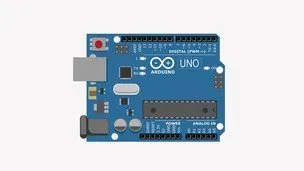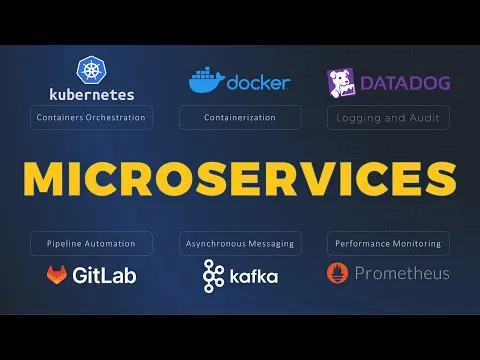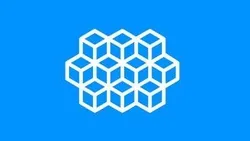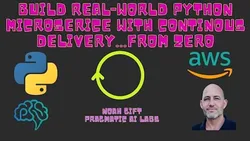
Developing Cloud-Native Apps w& Microservices Architectures 
This course provides an overview of the frameworks and tools needed to develop cloud-native applications using microservices architectures. Learn how to create a scalable, reliable, and secure system for your business. ▼
ADVERTISEMENT
Course Feature
![]() Cost:
Cost:
Free
![]() Provider:
Provider:
Udemy
![]() Certificate:
Certificate:
No Information
![]() Language:
Language:
English
![]() Start Date:
Start Date:
On-Demand
Course Overview
❗The content presented here is sourced directly from Udemy platform. For comprehensive course details, including enrollment information, simply click on the 'Go to class' link on our website.
Updated in [March 06th, 2023]
This course is designed for developers, architects, and DevOps engineers who want to learn how to build and deploy microservices architectures. After completing this course, students will be prepared to take more advanced courses from Red Hat.
This course, Developing Cloud-Native Apps with Microservices Architectures, is an official Red Hat® training course led by Burr Sutter, the Chief Developer Advocate for Red Hat. It provides an in-depth look into the microservices architecture and how to combine different frameworks and tools into a microservices architecture that fits organizational needs. Through a series of videos, this course will introduce microservices, review multiple microservices frameworks and runtimes, and show students techniques to deploy them through a hassle-free DevOps pipeline. Topics covered include containers, Docker, Spring Boot, NodeJS, .NET, OpenShift, Jenkins, Vert.x, Kubernetes, and more.
This course is designed for developers, architects, and DevOps engineers who want to learn how to build and deploy microservices architectures. Upon completion of the course, students will have a better understanding of the basics of executing a microservices architecture and will be prepared to take more advanced courses from Red Hat.
[Applications]
Upon completion of this course, students will be able to apply the knowledge and skills they have learned to develop cloud-native applications with microservices architectures. They will be able to identify the proper frameworks and tools to build their microservices architecture, and be prepared to take more advanced courses from Red Hat.
[Career Paths]
1. Cloud-Native App Developer: Cloud-native app developers are responsible for developing applications that are designed to run on cloud-based platforms. They must be knowledgeable in the latest cloud technologies and have experience in developing applications that are optimized for the cloud. They must also be able to troubleshoot any issues that arise with the application and ensure that it is running smoothly. Developing trends for this job position include the use of containerization, serverless computing, and automation.
2. Microservices Architect: Microservices architects are responsible for designing and implementing microservices architectures. They must have a deep understanding of the various microservices frameworks and tools, and be able to design and deploy a microservices architecture that meets the needs of the organization. Developing trends for this job position include the use of DevOps pipelines, containerization, and automation.
3. Cloud Security Engineer: Cloud security engineers are responsible for ensuring the security of cloud-based applications and services. They must have a deep understanding of cloud security best practices and be able to identify and mitigate any potential security risks. Developing trends for this job position include the use of encryption, identity and access management, and cloud security automation.
4. DevOps Engineer: DevOps engineers are responsible for automating the development and deployment of applications. They must have a deep understanding of DevOps best practices and be able to design and implement a DevOps pipeline that meets the needs of the organization. Developing trends for this job position include the use of containerization, automation, and continuous integration/continuous delivery (CI/CD).
[Education Paths]
1. Bachelor of Science in Computer Science: This degree path focuses on the fundamentals of computer science, such as programming, software engineering, and computer architecture. It also covers topics such as artificial intelligence, machine learning, and data science. With the rise of cloud computing, this degree path is becoming increasingly popular as it prepares students to develop cloud-native applications and microservices architectures.
2. Bachelor of Science in Software Engineering: This degree path focuses on the design and development of software applications. It covers topics such as software design, software development, software testing, and software maintenance. With the rise of cloud computing, this degree path is becoming increasingly popular as it prepares students to develop cloud-native applications and microservices architectures.
3. Master of Science in Cloud Computing: This degree path focuses on the fundamentals of cloud computing, such as cloud architecture, cloud security, and cloud storage. It also covers topics such as cloud orchestration, cloud automation, and cloud analytics. With the rise of microservices architectures, this degree path is becoming increasingly popular as it prepares students to develop and manage cloud-native applications and microservices architectures.
4. Master of Science in Data Science: This degree path focuses on the fundamentals of data science, such as data mining, data analysis, and data visualization. It also covers topics such as machine learning, artificial intelligence, and natural language processing. With the rise of microservices architectures, this degree path is becoming increasingly popular as it prepares students to develop and manage cloud-native applications and microservices architectures.
Pros & Cons

Simple language

Understand concepts

Valuable resources

Surefooted guide

Good

Excelente.

Fast English

Difficult to understand.
Course Provider

Provider Udemy's Stats at AZClass
Developing Cloud-Native Apps w& Microservices Architectures provides an overview of the frameworks and tools needed to develop cloud-native applications using a microservices architecture. Learn how to create a scalable, reliable and secure system for your business. By the end of this course, you will have the skills and knowledge to identify appropriate frameworks and tools for building microservices architectures. You will also be prepared to study more advanced courses offered by Red Hat. This course will help learners understand the fundamentals of implementing a microservices architecture, practice techniques for deploying various microservices frameworks through DevOps pipelines, and prepare to take Red Hat's more advanced courses.
Discussion and Reviews
0.0 (Based on 0 reviews)
Explore Similar Online Courses

The Arduino and Electronics Bootcamp

Personal Finance Part 1: Investing in Yourself

Python for Informatics: Exploring Information

Social Network Analysis

Introduction to Systematic Review and Meta-Analysis

The Analytics Edge

DCO042 - Python For Informatics

Causal Diagrams: Draw Your Assumptions Before Your Conclusions

Whole genome sequencing of bacterial genomes - tools and applications

Microservices Explained in 5 Minutes

Microservices Architecture and Implementation on NET 5


Start your review of Developing Cloud-Native Apps w& Microservices Architectures